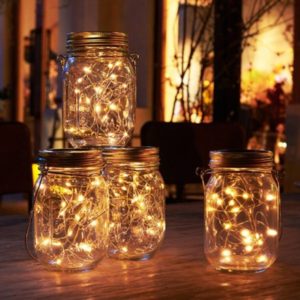The New Year and Christmas holidays are perhaps the most waste-generating period of the year. Shops, shop windows, streets, offices, entrances and, of course, apartments are decorated… maybe, too much decorated by the unnecessary things? Let’s make it clear, reading the Sher.media article.
What’s wrong with the New Year?
Of course, the celebration as it is is ok. Except for the enormous amount of garbage produced for just one day a year. Glitter, fireworks, tinsel, confetti. Yes, all this is beautiful at the moment. But the holiday ends, and the resulting waste goes to the landfill to live out its long and relatively meaningless life.
On New Year’s holidays, the amount of garbage increases 2.5-3 times. In the UK alone, so much gift wrapping is used during the Christmas period that it can wrap the globe nine times! It also throws away 1 billion postcards, 6 million Christmas trees and tons of uneaten food, according to British waste management company Biffa. Environmentalists are also concerned about the number of clothes bought exclusively for a festive evening, for example, sweaters with deer. Hubbub estimates 65 million of these sweaters gather dust in British wardrobes, worn only once a year.
Spruce. Artificial or Alive?
An artificial tree is a construction made of various types of plastic and metal. The vast majority of these spruces are produced in China, which means emissions during transportation. 65% of the carbon footprint of artificial spruce is oil, which is used in its manufacture. The carbon footprint of 2-meter artificial spruce is 40 kg CO2.
However, if you already have artificial spruce, keep using it for as long as possible! It is believed that artificial spruce must be used at least 20 times to justify its eco-trail.
Also, do not forget that such a tree is not biodegradable and recyclable, so do not rush to throw it in the trash can if you no longer need it. It is better to give it in groups “I will give it for free,” they are willingly taken to decorate the premises of kindergartens and schools.
Live spruces are grown in special nurseries. While the tree is growing, it helps the ecosystem. You have every right to request documents at the Christmas tree bazaar or in the store to ensure that the trees are not victims of illegal logging. After use, live spruce must be handed over for recycling to special collection points that open throughout the country. Zoos also accept them for animal feed.
A tree thrown into the trash bin is not sustainable recycling!
The carbon footprint of live spruce submitted for processing is only 3.5 kg of CO2.

Alternative tree
You can do without the traditional tree for the holiday and come up with various “spruce” from improvised and environmentally friendly materials.
Made from books, from twigs and jute thread, from wine corks, from cones, nuts and dried fruits, from boards, from fabric in the form of a canvas – choose any option you like!
Christmas tree decorations
One of the eco-principles is to reduce consumption. Try not to buy extra balls, tinsel, and garlands: they are not recyclable.
- Use the decorations you already have at home.
- Prefer toys made from glass, wood, jute, or other natural materials.
- Make toys and wreaths with your own hands: from cones, dried fruits, cinnamon sticks, hang gingerbread cookies or candies, and decorated glass jars can be a great lamp.

Garland
- Give preference to mains-powered LED strings; they consume the least amount of electricity.
- Remember to turn off the lights when you leave the room.
- If your string is battery powered, use rechargeable batteries that can be recharged many times. Be sure to recycle ordinary batteries.
A burnt-out garland should not be thrown into mixed waste, as it contains heavy metals and is toxic to the environment. Take it to a collection point for electrical junk or at the nearest eco-campaign to collect broken equipment.

Buy / Sell / Give / Change
It is believed that buying one item on the secondary market saves over 3,000 liters of clean water and 22 kg of CO2, conserves natural resources, and prolongs the life of things.
If you have decided to buy artificial spruce, then do not rush to the store, but look at the sites for the sale of used goods or ask in groups where unnecessary things are given away for free. There are such groups on all social networks. You can also buy Christmas decorations, Christmas wreaths, and decorations from your hands, so you will save money and reduce the eco-trail of things.
You can arrange a swap at work or among friends – exchanging toys and decorations, dishes, and other New Year’s paraphernalia.
Gift wrap
Give gifts, not packaging!
The packaging serves one minute but does not decompose in nature. Gift paper is non-recyclable, as are gift bags, ribbons, and decorative bows.
The best packaging is no packaging! Do not hesitate to hand over a gift in its original packaging, explaining that you care about nature. Your loved ones will understand and appreciate it.
If this option is not possible, use those gift bags you already have at home, do not buy new ones.
It’s a big misconception that craft bags and wrapping paper are more environmentally friendly than plastic ones. Making paper requires enormous amounts of electricity and water. And don’t forget that paper is a cut-down forest.
Postcards
Most postcards are made of laminated paper, which is not recyclable. The postcard lasts 1 minute, then it is removed to the far shelf or discarded altogether. Often, postcards are accompanied by decorative elements – sparkles, rhinestones, electronic devices for playing a melody, ribbons. So a harmless little thing becomes an ecological disaster.
- Avoid postcards altogether.
- Gift cards made from recycled paper or receipts.
- Transfer unsigned postcards.
- Do not buy postcards with additional elements: plastic packaging, three-dimensional figures, electronic devices, and so on.
Candles
Most often, candles that are found on store shelves are made of paraffin – this is a refined oil product that is not subject to biodegradation and processing.
When choosing candles for home decoration, pay attention to their composition. Better to choose candles made from beeswax, coconut, or soy wax.
Refusal of disposable items
Try to avoid jewelry, gifts, and décor that don’t last as long as the resources expended. They literally serve a couple of minutes, but remain garbage for many years.
- Confetti, streamer and packaging from them.
- Bengal lights.
- Sequins and sequins.
- Fireworks and firecrackers (contain toxic substances that enter the soil, scare birds and animals).
- Disposable tableware, including “paper”, it is with plastic lamination.
- Things with the symbols of the year (will be relevant again only after 12 years).
Wishlist
The most environmentally friendly gift is an unnecessary gift.
Prepare an electronic list of what you want to receive for the New Year and send it to family and friends.
Request a similar list from those you plan to give gifts to.
Products
According to a UN report, 1/3 of all food produced worldwide is wasted. On New Year’s holidays, this figure increases significantly. This is due not only to food waste leftover from cooking but also to overconsumption, when more food is bought than people are able to eat. As a result, it deteriorates and goes to the trash can.
Prepare the menu of the festive table in advance, calculate the ingredients and the number of servings.
Go to the store with a list so that you will avoid momentary purchases.
Freeze foods you don’t need.
Share food. Invite friends to a hangover party on January 1st, or give away in food sharing groups.
***
To match a real tree, a plastic tree will have to be kept-and used! – for about 12 years in order to have an equivalent carbon footprint with the good old pine tree. But even then, those trees will never decay per say and will contribute to either soil pollution and increase chemicals in the air as they are destroyed by fire or pollute the land.
So our columnist advises you not to buy any Christmas Tree. Why? Read the full explanation here.



